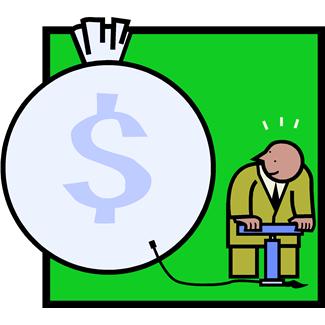 I remember sitting in my intermediate macroeconomics class at Johns Hopkins, when the Professor was trying to develop the concept of the Phillips Curve, which posits a trade-off between labor unemployment and price inflation, at least in the short run. ?The time was the Fall of 1980, and macroeconomics was trying to catch up with what happened with stagflation, because that was not something that expected would come from their policy recommendations that offered the politicians a free lunch.
I remember sitting in my intermediate macroeconomics class at Johns Hopkins, when the Professor was trying to develop the concept of the Phillips Curve, which posits a trade-off between labor unemployment and price inflation, at least in the short run. ?The time was the Fall of 1980, and macroeconomics was trying to catch up with what happened with stagflation, because that was not something that expected would come from their policy recommendations that offered the politicians a free lunch.
This trade-off underlies the concept of the dual mandate of the Federal Reserve, where they are not only to try to restrain price inflation, but also aim for full labor employment. ?I don’t think it is realistic to do this for two reasons.
1) For the theory of the Phillips Curve to work, the central assumption is that price inflation funnels directly into wage inflation. ?This is a questionable assumption, as I will explain below.
2) The FOMC has a hard enough time using monetary policy to restrain or accelerate price inflation.
Why might price inflation vary from wage inflation? ?There are two main reasons in the present: technological improvements that require less labor to produce the same or better output, and an increase in overseas laborers available to produce good or services?outside the US for sale inside the US. ?Notice I am not mentioning immigration, though that might have a small impact on the wages of the lowest-skilled jobs in the short run.
I see both of these factors acting at present, which until our economy adjusts to create more jobs, initially at lower pay than most will want, will restrain the growth in wages, particularly adjusted for inflation.
- Now, give Janet Yellen some credit, because she recognizes the weakness of looking at the headline unemployment number as a guide to policy and has broadened out her labor market indicators to reflect that a low U-3 unemployment rate doesn’t mean the labor market is great. ?She looks at the rates of layoffs/firings, job openings, voluntary quitting, hiring, and labor force partipation, among others.
- This is similar to what I suggested in a recent post on labor underemployment. ?Payments to labor are a smaller fraction of the economy, and real wages have flatlined.
- That said, I don’t think the Fed can succeed here, because the relationship between monetary policy and real wages is nonexistent as far as I can see. ?The Fed is better at inflating assets in an era where the better-off save, than it is in inflating prices, which it more direct effect on than wages.
- There is slow but steady pressure for wage rates to equalize globally, slowly but surely. ?Being born in the West is not in itself a ticket to above average wages.
I don’t blame the Fed for the poor labor market conditions; it’s not in their power. ?Maybe we can blame Congress and the Executive Branch for making laws that inhibit hiring and firing, both at the national and state levels. ?We might blame the schools for not taking a more balanced approach to education,?stressing vocational education alongside a strong liberal arts education that includes real science and math. ?Parents, if the school systems don’t do this, if your children will listen to you, get them thinking along these lines.
You are your own best defender with respect to your own employment, so put some thought into alternative work, should you find yourself unemployed. ?Analyze how you can meet the most needs/demands of others and fill those needs/demands, and you will never lack work.
I wish you the best in a tough labor market.

One thought on “The Problem with the Phillips Curve”